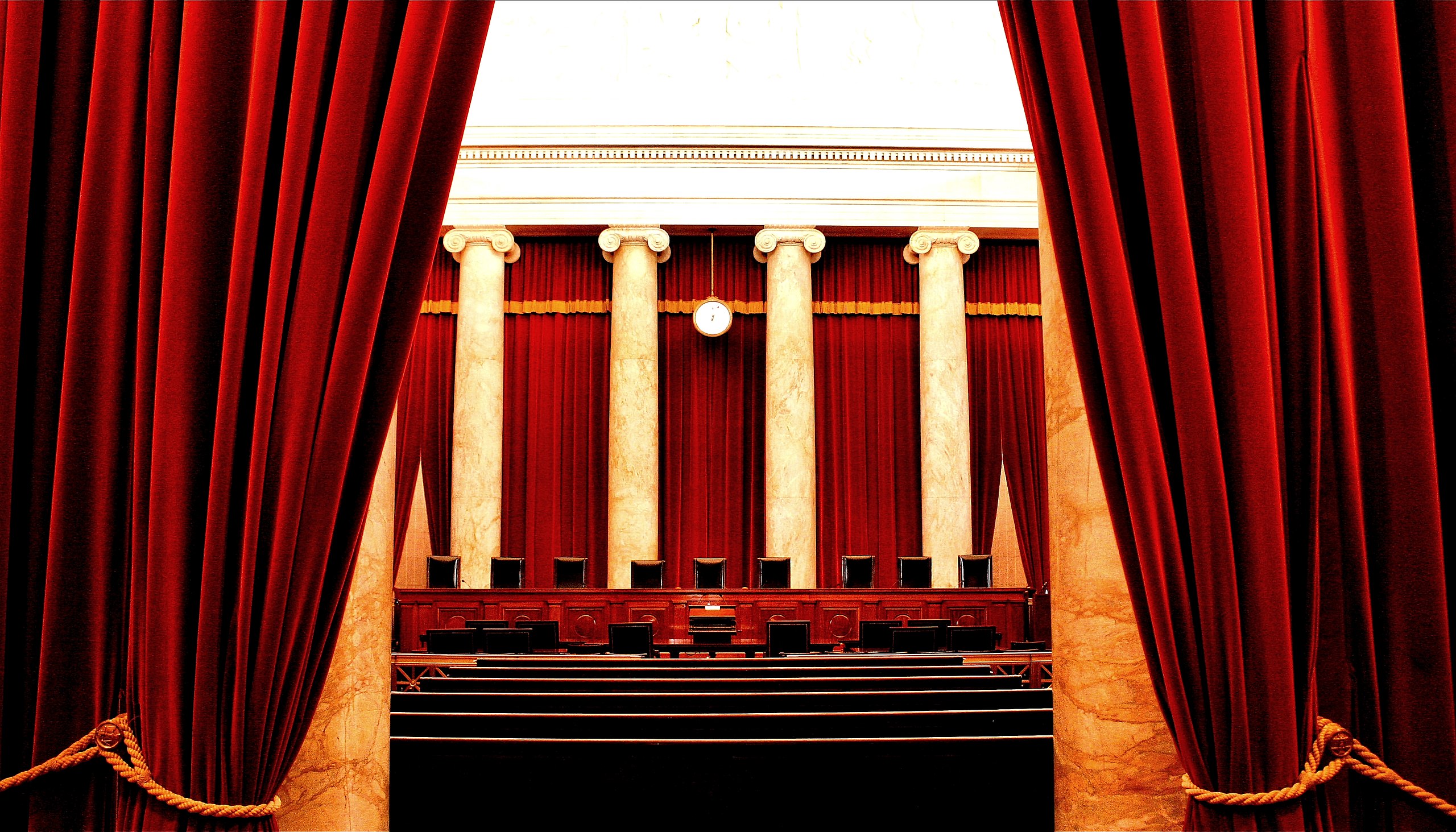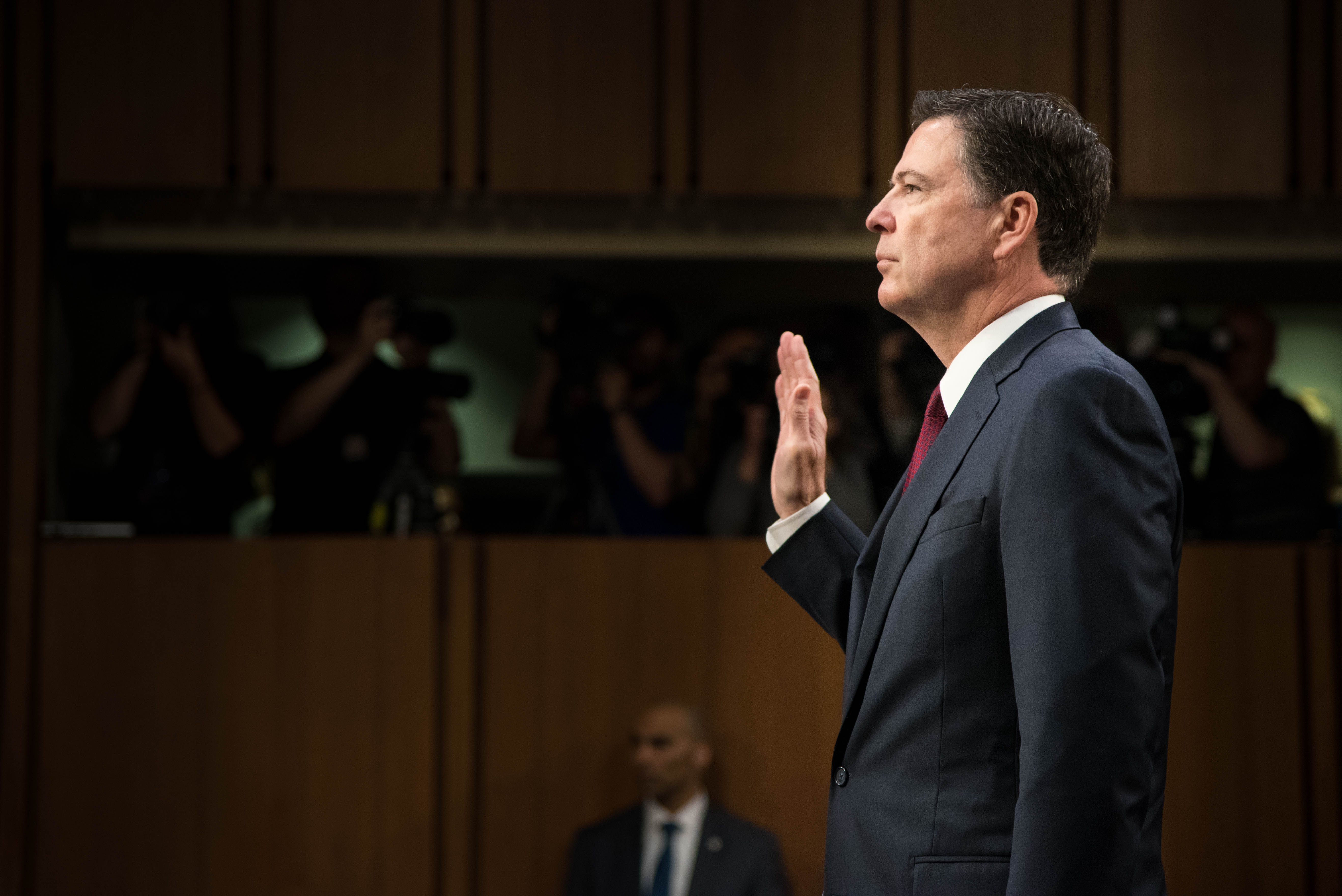‘Slaughter’-ing Humphrey’s Executor

Published by The Lawfare Institute
in Cooperation With

For almost 140 years, removal protections have been the hallmark of independence for multimember commissions like the Federal Trade Commission (FTC). By statute, the president may remove FTC commissioners only “for inefficiency, neglect of duty, or malfeasance in office.” President Trump did not cite any of these reasons when, in March 2025, he removed FTC commissioners Rebecca Slaughter and Alvaro Bedoya. Instead, he argued that the Constitution vests all executive power in the president and, therefore, the FTC’s removal protections could not constitutionally constrain his power to remove them. Trump has also removed commissioners at other independent agencies, such as the Merit Systems Protection Board and the National Labor Relations Board, in violation of statutory removal protections.
Trump’s actions directly conflict with Humphrey’s Executor v. United States, in which the Supreme Court upheld the FTC commissioners’ removal protections. By removing Slaughter and Bedoya without cause, Trump overstepped his statutory authority and violated Supreme Court precedent. Indeed, Judge Loren AliKhan of the U.S. District Court for the District of Columbia granted summary judgment in favor of Slaughter, and the U.S. Court of Appeals for the D.C. Circuit refused to stay that decision.
The U.S. Supreme Court, however, stayed the district court’s decision, allowing Trump to remove Slaughter during the pendency of the case. Simultaneously, the Court granted certiorari on two issues: first, “Whether the statutory removal protections for members of the Federal Trade Commission violate the separation of powers and, if so, whether Humphrey’s Executor, 295 U.S. 602 (1935), should be overruled,” and second, “Whether a federal court may prevent a person’s removal from public office, either through relief at equity or at law.”
Scholars largely anticipate that the Supreme Court will narrow or overturn Humphrey’s Executor in Trump v. Slaughter, but the degree to which the Supreme Court will carve back Humphrey’s Executor remains unclear. Regardless, Slaughter will carry significant consequences for public administration.
The Slow Death of Humphrey’s Executor
The first question presented in Trump v. Slaughter asks whether the Court should overturn Humphrey’s Executor. The Constitution discusses the removal of officers only in conferring the impeachment power upon Congress. Although Article II grants the president the power to nominate principal officers of the United States with the advice and consent of the Senate, nothing in the Constitution explicitly grants them the power to remove these officers. Whether the president has the power to remove subordinates and whether Congress may restrict that power remains one of the most hotly contested issues in constitutional law.
Although silent on the question of removal, Article II vests the “executive power” in “a President of the United States.” Proponents of unitary executive theory argue that the “executive power” vested by Article II necessarily includes the right to control subordinates within the executive branch. Many proponents view the power to remove subordinate officers as a residual feature of the “executive power” inherited by the president from the British Crown. Others have alternative theories about why Article II confers the removal power. Of course, opponents of unitary executive theory—and even some of its proponents—argue that the Vesting Clause confers no removal power and that Congress’s power over agency design allows for removal protections.
Those who believe the Constitution necessarily confers the removal power upon the president draw support from the Supreme Court’s decision in Myers v. United States. In that case, Chief Justice William Taft—himself once president—held that “the power of removal of executive officers was incident to the power of appointment.” His decision follows a similar logic as unitary executive theory. Presidents rely on subordinates to execute the law, and, therefore, they have the power to appoint their agents. Consequently, presidents must also have the power to remove these agents when they fail to faithfully execute the law.
In various cases before Myers, however, the Supreme Court held that Congress could restrict removal for inferior officers. In Ex Parte Hennen, the Court upheld the removal of a district court clerk but implied that statutory law could limit removal. In United States v. Perkins, the Court held that Congress may limit the removal of inferior officers when it vests their appointment in the heads of departments. The Court reasoned, “The constitutional authority in Congress to thus vest the appointment implies authority to limit, restrict, and regulate the removal by such laws as Congress may enact in relation to officers so appointed.” Taft narrowly construed these precedents in Myers, reasoning that the different appointment mechanisms for inferior officers grant Congress greater control over the removal of inferior officers.
Shortly after Myers, the Supreme Court jettisoned much of Taft’s reasoning in Humphrey’s Executor. Relying on the precedent set in Myers, President Franklin Roosevelt removed FTC Commissioner William Humphrey, who enjoyed for-cause removal protections. The majority in Humphrey’s Executor affirmatively “disapproved” of Taft’s strongest statements in Myers and characterized them as nonbinding dicta. In upholding the removal protections, the Court reasoned that the FTC “cannot in any proper sense be characterized as an arm or an eye of the executive”:
To the extent that it exercises any executive function—as distinguished from executive power in the constitutional sense—it does so in the discharge and effectuation of its quasi-legislative or quasi-judicial powers, or as an agency of the legislative or judicial departments of the government.
The precise rule of Humphrey’s Executor has confused both scholars and jurists. In Morrison v. Olson, the Supreme Court more or less abandoned the quasi-judicial and quasi-legislative categories it used to justify removal protections for multimember commissions. According to the Court, “the real question is whether the removal restrictions are of such a nature that they impede the President’s ability to perform his constitutional duty”—not whether the official exercises “purely executive” power rather than “quasi-judicial” or “quasi-legislative” power.
Together, Myers and Humphrey’s Executor appeared to stand for the proposition that the president possesses the power to remove principal officers by default, but Congress could expressly restrict that power in specific circumstances. The Court’s decision in Wiener v. United States complicated this rule by holding that some agencies possess implied removal protections. The petitioner—an adjudicator of the War Claims Commission—argued that his removal by the president was unlawful, even though the War Claims Act did not expressly restrict his removal. Drawing from Humphrey’s Executor, the Supreme Court concluded that the president had no constitutional authority to remove commissioners of an adjudicatory body and that statutory silence did not implicitly confer the removal power upon the president. Wiener allowed for the possibility that officers without express removal protections, like commissioners of the Securities and Exchange Commission (SEC), enjoyed impliedremoval protections.
The Roberts Court has chipped away at Congress’s power to restrict removal and simultaneously expanded the president’s control over principal officers. In Free Enterprise Fund v. Public Company Accounting Oversight Board, the Supreme Court considered the constitutionality of removal protections for members of the Public Company Accounting Oversight Board (PCAOB). Congress created the PCAOB as an entity within the SEC but limited the SEC commissioners’ ability to remove their appointees to the PCAOB. For the sake of argument, the Supreme Court assumed that the SEC commissioners also enjoyed removal protections. Chief Justice John Roberts’s majority opinion reasoned that these “double for-cause removal protections” impermissibly insulated PCAOB members from presidential oversight. The Court emphasized that Article II requires the president to remain politically accountable for executive action, and such accountability dissipates if inferior officers are insulated not once, but twice, from presidential control.
In Seila Law LLC v. Consumer Financial Protection Bureau, the Court went further by invalidating removal protections for the head of the Consumer Financial Protection Bureau (CFPB). The CFPB’s statute permitted the president to remove its single director only “for inefficiency, neglect of duty, or malfeasance in office.” Writing for the majority, Chief Justice Roberts concluded that such a restriction on removal was unconstitutional when applied to a single-headed agency wielding substantial executive authority. In Collins v. Yellen, the Court extended Seila Law by holding that the Federal Housing Finance Agency’s single-director structure with for-cause removal protection likewise violated Article II, reaffirming that such insulation is incompatible with presidential accountability. The Office of Legal Counsel subsequently concluded that Collins permitted the president to remove the Social Security commissioner at will.
In all three cases, Chief Justice Roberts described the precedent as recognizing only two exceptions to the president’s general removal authority: the Humphrey’s Executor exception for multimember commissions and the Perkins exception for inferior officers. First, Roberts has explained that Humphrey’s Executor permitted Congress to “create expert agencies led by a group of principal officers removable by the President only for good cause.” Roberts’s description of Humphrey’s Executor is much narrower than the description offered in Morrison. Second, Roberts has emphasized that “Congress could provide tenure protections to certain inferior officers with narrowly defined duties.” Yet Roberts declined to clarify what types of responsibilities qualify as “narrowly defined duties.”
By the beginning of Trump’s second term, many legal scholars regarded Humphrey’s Executor as effectively on life support. That perception was reinforced when the Supreme Court stayed a district court order enjoining the removal of members of the Merit Systems Protection Board (MSPB) and the National Labor Relations Board (NLRB). In an unsigned, two-page opinion in Trump v. Wilcox, the Supreme Court concluded that “the Government [was] likely to show that both the NLRB and MSPB exercise considerable executive power.” The majority, however, stopped short of deciding whether those agencies fell within the Humphrey’s Executor exception. Nevertheless, it felt the need to recognize a new exception for the Federal Reserve—an agency not before the Court—reasoning that the “Federal Reserve is a uniquely structured, quasi-private entity that follows in the distinct historical tradition of the First and Second Banks of the United States.” Such an originalist-inspired carve-out would have been unnecessary if Humphrey’s Executor remained firmly intact.
The Supreme Court appears poised to overturn—or at least substantially narrow—Humphrey’s Executor. How far the Court intends to extend the president’s removal power remains uncertain, and any prediction is fraught. Roberts authored the majority opinions in Free Enterprise and Collins, adopting a characteristically incrementalist approach to changing precedent. Yet Roberts is no longer the pivotal vote in the conservative majority. Justices Clarence Thomas and Neil Gorsuch have openly called for overruling Humphrey’s Executor. Justice Brett Kavanaugh has expressed skepticism about the decision, though scholars debate whether he would vote to overturn it. Justice Samuel Alito, who authored Collins, has not indicated whether he would support overruling Humphrey’s Executor. Justice Amy Coney Barrett has yet to write in a case involving removal protections. The coming term will reveal whether the Court is prepared to dismantle Humphrey’s Executor outright or continue its gradual erosion.
The narrowest path forward could preserve Humphrey’s Executor while distinguishing the modern FTC on factual grounds. Today’s FTC exercises greater power than it did in 1935, raising questions about whether it exercises “substantial executive authority” rather than “quasi-judicial” or “quasi-legislative” functions. The D.C. Circuit has interpreted the Trade Commission Act as providing broader authority than originally anticipated, and the Magnuson-Moss Warranty Act greatly expanded the FTC’s jurisdiction over consumer protection. This incrementalist approach would preserve the core holding of Humphrey’s Executor but would require lower courts to undertake the fraught task of parsing agency functions to decide whether a given agency exercises “substantial executive authority.”
Alternatively, the Court could simply overturn Humphrey’s Executor, striking down removal protections for most multimember commissions. As suggested by its rhetoric in Trump v. Wilcox, the Court seems poised to recognize an exception for the Federal Reserve Board of Governors. Effectively, the Court may preserve removal protections for entities or officers that had some sort of analog at the Founding. (Such a test, however, has its own problems with respect to the Federal Reserve.)
As discussed below, the demise of Humphrey’s Executor would be immensely consequential, but its ripple effects may prove even greater in subsequent cases. Trump has already removed members of the Senior Executive Service—who are plausibly inferior officers—raising questions about the viability of Perkins and its exception for inferior officers. Judge James Ho of the U.S. Court of Appeals for the Fifth Circuit has likewise suggested that the courts should reconsider whether tenure protections for federal employees violate Article II. Taken to its extreme, Slaughter could become the catalyst for dismantling long-standing civil service protections.
Remedies in Removal Cases
The second question presented in Trump v. Slaughter concerns the appropriate remedy in cases involving the removal of a federal official. The petitioners in Perkins, Myers, and Humphrey’s Executor sought back pay. (In fact, Humphrey died during litigation.) Recently, however, commissioners and former employees have sought to enjoin their removal from office. Whether courts have the authority to provide injunctive relief to principal officers has yet to be decided.
The remedy has significant consequences for the petitioners and the administration of government. In general, most commissioners are motivated to retain the power of their positions—not their modest government salaries. Until his death, Humphrey insisted he remained an FTC commissioner and retained authority to exercise its duties. Injunctive relief provides removed officials with the remedy they truly seek and incentivizes them to bring actions aimed at enforcing statutory limitations on removal.
Without interim relief, however, removal may cause instability. Suppose the president appoints a successor who occupies the office pending the resolution of litigation. Depending on the willingness of courts to preliminarily enjoin removal, the position may flip between the removed officer and the president’s preferred appointee throughout litigation. Thus far, the Supreme Court has suggested that it would not allow courts to preliminarily enjoin removals. In Trump v. Wilcox, the majority described its stay of the district court’s injunction as “reflect[ing] our judgment that the Government faces greater risk of harm from an order allowing a removed officer to continue exercising the executive power than a wrongfully removed officer faces from being unable to perform her statutory duty.”
In a forthcoming article, Samuel Bray develops a remedial framework for officer removal cases that helps explain why the second question in Trump v. Slaughter is so significant. He argues that the best remedy for a wrongfully removed officer is typically declaratory relief—through a declaratory judgment or quo warranto—because such judgments definitively resolve the officer’s legal entitlement to office without requiring courts to manage the executive branch directly. On interim relief, Bray emphasizes what he calls the “anti-flipping principle”: courts should minimize the instability created when control of an office toggles back and forth during litigation. To achieve that, he proposes a presumption that officers who sue immediately to contest their removal should remain in place as de facto officers pending judgment, while those who delay should not be restored through preliminary injunctions. This approach, grounded in historical equity practice and the de facto officer doctrine, seeks to deter opportunistic removals by the president while avoiding the chaos of repeated turnovers in officeholders.
The debate over remedies is not abstract—the removal of Federal Reserve Governor Lisa Cook illustrates the stakes. President Trump’s attempt to oust Cook without cause raised precisely the instability that Bray identifies. If the courts lacked authority to provide interim relief, Cook could have been removed, replaced, and then reinstated after months of litigation, creating “flips” in officeholders at the very heart of monetary policy. Such turnover risks undermining market confidence and the Fed’s institutional credibility. By contrast, adopting Bray’s anti-flipping principle would mean that, because Cook immediately sued to contest her removal, she should remain as a de facto officer until the litigation concludes. This approach preserves continuity in the governance of the Federal Reserve while still leaving open the possibility of judicial resolution on the merits.
In a brief, unsigned order issued on Oct. 1, the Supreme Court deferred Trump’s request for a stay in Trump v. Cook. Consequently, Cook will remain in office at least until the Supreme Court hears arguments in January 2026. The Supreme Court did not explain why it granted Trump’s request in Slaughter but denied it in Cook. Presumably, its decision relates to the fact that a majority believes that the Federal Reserve’s removal protections are constitutional, while the FTC’s protections are not. The federal government does not technically challenge the Federal Reserve’s removal protections in Trump v. Cook, but the Court will likely distinguish (at least in dicta) its decision in Slaughter from Cook based on its reasoning in Trump v. Wilcox. Nevertheless, the Court will still need to decide whether the Federal Reserve’s officers are entitled to a hearing before their removal.
Whatever the court decides in Slaughter and Cook, the Supreme Court’s answer to the remedy question should have less impact on federal civil servants. When a federal employee is unlawfully removed, the statutory framework provides both a right to challenge the action and a remedy of reinstatement with back pay. Under the Civil Service Reform Act of 1978, employees may appeal removals to the Merit Systems Protection Board, which has the authority to order reinstatement if the action is found unlawful. Likewise, employees found “to have been affected by an unjustified or unwarranted personnel action” must receive back pay and benefits, effectively restoring them to the status quo ante. Because Congress has specified statutory remedies for civil servants, civil servants do not need to rely on the equitable powers of the court for relief.
Implications
In all likelihood, Slaughter and Cook will reshape the relationship between the president and independent agencies. The precise implications of the decision depend on the course the Supreme Court takes.
Before discussing how Slaughter affects administration within the executive branch, it is worth examining its implications for the relationship between the president and the Supreme Court. Some commentators predict that Trump will defy a ruling by the Supreme Court. Preserving its institutional authority requires the Court to assert clearly and forcefully that the president is bound to respect its precedent.
Yet Trump has openly defied existing precedent by removing the FTC commissioner. Even if the Supreme Court ultimately intends to narrow or overturn Humphrey’s Executor, its failure to check the president’s defiance risks signaling that the Court’s precedents can be ignored until formally enforced. The Court could have sent a stronger message about the rule of law by staying the district court’s decision, reinforcing that precedent binds the executive until the Court itself says otherwise. The decision signals that precedent binds only when the Court chooses to enforce it—undermining the idea of stare decisis, which holds that courts should decide cases according to prior precedents.
Ultimately, Slaughter may have little practical effect on the president’s ability to control multimember commissions. Survey research by Neal Devins and David Lewis suggests that—contrary to popular wisdom—independent commissions are not particularly insulated from White House influence. Todd Phillips demonstrates that control over commission chairs grants the president considerable control over the day-to-day operations of these agencies. Anecdotal evidence illustrates the degree of control presidents already exercise over most independent agencies. The Federal Communications Commission promulgated net neutrality regulations during the Obama administration, only to repeal those regulations during the first Trump administration. Extending the removal power may not meaningfully improve the president’s ability to exercise control over these agencies.
That does not mean, however, that independent agencies will experience no change. The organic statutes governing many multimember commissions, including the FTC, require presidents to appoint members of both parties to the commission. Members of these commissions also serve a staggered period of a fixed number of years. Structural features such as partisan-balancing and staggered terms are rendered less effective by an unfettered removal power.
Moreover, multimember commissions have quorum rules that require the presence of a majority of commissioners to conduct business. As Todd Phillips and I argue in a forthcoming article, expansion of the removal power enables presidents to break quorums. Depriving commissions of a quorum matters most for adjudicatory commissions, such as the Merit Systems Protection Board. Parties appearing before adjudicatory commissions typically must exhaust their claims before these adjudicatory commissions before filing a claim in federal court. Without a quorum, parties’ cases go undecided, and they remain trapped in adjudicatory limbo until the president nominates and the Senate confirms a sufficient number of commissioners.
Overturning Humphrey’s Executor could also weaken administrative capacity within independent agencies. On average, these agencies employ more skilled workforces than cabinet departments, in part because their institutional structures preserve the autonomy that attracts talented professionals to federal service. These same structures may reduce politicization within independent agencies—another leading cause of retention problems. In interviews I conducted around the 2020 election, early-career federal employees frequently expressed a preference for independent agencies over cabinet departments, favoring the perceived stability of these agencies. Slaughter may erode the advantage independent agencies enjoy in the job market, undermining their ability to recruit and retain qualified employees. And if the Supreme Court ultimately extends the decision to eliminate tenure protections for all career staff, the resulting instability could drastically impair the ability of the federal government to recruit and retain qualified individuals.
Regardless of whether unitary executive theory is ultimately correct that removal protections violate Article II, these protections have been central to the administrative state for nearly 140 years. Abolishing them will reshape the administration of many federal agencies. The degree of change, however, will depend on how far the Supreme Court ultimately extends the president’s removal power—whether in Slaughter or subsequent cases.




